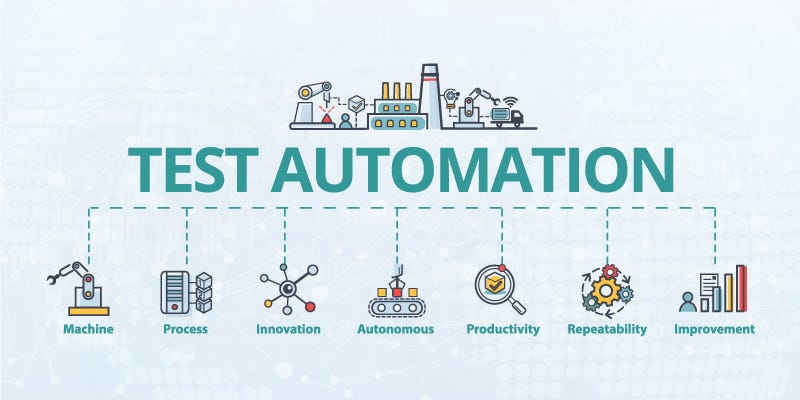Automation Testing Techniques: Finest Practices for Seamless Assimilation
Automation Testing Techniques: Finest Practices for Seamless Assimilation
Blog Article
From Manual to Automated Testing: A Comprehensive Guide to Transitioning Smoothly and Effectively
In the world of software screening, the shift from guidebook to automated procedures has actually ended up being an increasingly essential shift for companies seeking to enhance performance and precision in their testing techniques. The journey from handbook to automated testing is not without its obstacles, but when come close to tactically and with a clear strategy in mind, the advantages can be substantial.
Benefits of Automated Examining
Automated testing supplies various benefits, enhancing effectiveness and precision in software application development procedures. One primary benefit is the substantial reduction in testing time. Automated examinations can be run simultaneously on several tools and running systems, significantly quickening the testing phase compared to hands-on screening. This increased effectiveness enables faster responses on the quality of the software application, enabling designers to identify and resolve problems quickly.
In addition, automated screening makes certain a greater degree of precision in detecting problems. Because automated tests follow predefined scripts, human mistake is minimized, leading to more reliable test outcomes. Consistency in screening is likewise enhanced, as automated examinations carry out the exact same steps exactly each time they are run. This consistency is essential in guaranteeing that all functionalities of the software application are thoroughly tested, reducing the chance of unnoticed insects slipping via to manufacturing.
Selecting the Right Devices

To start with, analyze your needs and goals. Understand the scope of your task, the modern technologies entailed, and the ability of your team. This analysis will certainly aid you establish the capabilities and attributes you call for in your screening devices.
Secondly, consider the compatibility of the devices with your existing systems and procedures. Smooth assimilation with your present software development lifecycle is vital to guarantee a smooth shift to automation.
Furthermore, evaluate the scalability and adaptability of the tools. As your testing requires develop, the devices must be able to adjust and fit modifications properly.
Last but not least, consider the support and neighborhood around the tools. When carrying out automated screening, robust assistance and an active individual community can supply valuable sources and support. By meticulously thinking about these facets, you can select the right devices that align with your demands and established the stage for an effective shift to automated testing.
Creating Effective Examination Manuscripts

When crafting examination manuscripts, it is necessary to think about the specific demands of the software being checked and make sure that the scripts attend to all crucial capabilities. Clear and descriptive calling conventions for test manuscripts and test situations can boost readability and maintainability. Additionally, including error handling mechanisms within the test manuscripts can help in determining and addressing issues immediately.
Furthermore, organizing examination manuscripts right into modular components can enhance reusability and scalability, minimizing redundancy and enhancing effectiveness in examination manuscript upkeep. Regular reviews and updates to check manuscripts are crucial to equal advancing software requirements and performances. By adhering to these concepts, testers can develop effective and robust test scripts that contribute substantially to the success of automated screening procedures.
Integrating Automation Into Workflows
Reliable assimilation of automation devices right into existing workflows streamlines processes and improves performance within software program development cycles. additional resources When incorporating automation into workflows, it is vital to determine recurring jobs that can be automated to conserve time and minimize human mistake. By effortlessly incorporating automated screening tools like Selenium or Appium into the software application development lifecycle, teams can achieve faster feedback on code changes, leading to quicker bug discovery and resolution. This assimilation enables continual screening throughout the advancement process, ensuring that any kind of concerns are recognized early, leading to higher software program top quality. Furthermore, automation can be used to trigger examinations immediately after each code commit, providing prompt recognition and maximizing testers to focus on even more complicated scenarios. Proper assimilation of automation devices requires cooperation in between advancement, testing, and procedures teams to develop a unified process that optimizes performance and efficiency in delivering top notch software items.
Ensuring a Smooth Shift
Successfully transitioning to automated screening includes meticulous preparation and cautious implementation to take full advantage of and minimize disturbances efficiency in the software program development process - automation testing. To guarantee a smooth change, it is important to start by carrying out a detailed analysis of the existing screening procedures and recognizing locations where automation can bring one of the most substantial advantages. Involving with all stakeholders beforehand at the same time, consisting of programmers, testers, and task supervisors, is critical for garnering support and buy-in for the automation initiative
Communication is key throughout this change phase. Clear interaction of the goals, benefits, and expectations of automated testing helps to manage any resistance or concerns that may occur. Additionally, offering sufficient training and resources for staff member to upskill in automation devices and strategies is essential for making certain an effective shift.

Conclusion
In conclusion, transitioning from handbook to automated testing uses many advantages, consisting of raised performance and integrity. By picking the ideal devices, creating reliable test scripts, and incorporating automation seamlessly into workflows, companies can ensure a successful and smooth transition. It is important to accept automation as a useful possession in software application screening procedures to boost general high quality and productivity.
In the realm of software testing, the change from handbook to automated processes has come to be a significantly crucial change for organizations seeking to enhance effectiveness and accuracy in their testing techniques. Automated examinations can be run concurrently on several devices and running systems, substantially speeding up the screening phase contrasted to hands-on testing. Uniformity in screening is likewise boosted, as automated examinations execute the same steps specifically each time they are run.To make sure useful reference the effective application of picked testing tools, the production of efficient test manuscripts plays an important function in verifying the functionality and performance of automated procedures - automation testing. By following these concepts, testers can produce effective and robust examination scripts that add considerably to the success of automated screening processes
Report this page